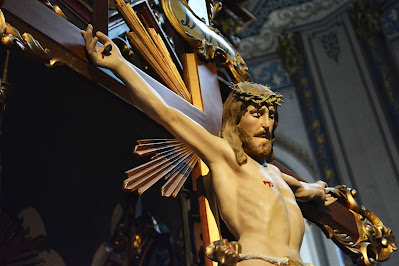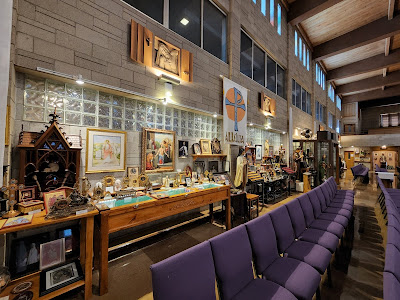« I have fought a good fight, I have finished my course, I have kept the faith » (2 Timothy 4:7)
As we prepare to enter into the holy season of Lent, we should prepare to observe a strict routine of prayer, fasting, and almsgiving. Below are 13 articles worth reading at this time:
- Fasting and Abstinence Rules
- History of Lenten Fasting: How to Observe the Traditional Lenten Fast
- Why do we fast? St. Thomas Aquinas Explains
- Lenten Embertide Fast
- How the Traditional Latin Mass Reinforces Lent as a Fast
- Stational Churches for Each Day of Lent
- What is Ash Wednesday & what are the rules for this day?
- Read One Spiritual Book this Lent
- Book Recommendations for Lent
- 10 Traditional Catholic Charities: Almsgiving During Lent
- Each Feria Day in Lent has a Proper Mass
- Holy Communion in Lent: The Most Pleasing to God
- Printable Lent Preparation Guide
While it is important that we observe prayer, fasting (including abstinence from meat), and almsgiving throughout all of Lent, there should be a particular focus on beginning and ending Lent well. This can take the form of starting and ending with 40 intense hours.
Why 40 Hours?
40 hours is significant because Our Blessed Lord was dead for 40 hours before His Resurrection. 40 is also a number of completion as shown by His 40 day fast in the desert, the Great Flood which lasted 40 days, and the 40 years of wandering in the desert by the Chosen People after their deliverance from Egypt.
40 Hours is also connected with Mardi Gras immediately preceding Lent. As a result of the excesses of Fat Tuesday and the carnival season, the Church instituted the practice of observing the 40 Hours Devotion in front of the Blessed Sacrament. Father Weiser remarks:
In order to encourage the faithful to atone in prayer and penance for the many excesses and scandals committed at carnival time, Pope Benedict XIV, in 1748, instituted a special devotion for the three days preceding Lent, called ‘Forty Hours of Carnival,’ which is held in many churches of Europe and America, in places where carnival frolics are of general and long-standing tradition. The Blessed Sacrament is exposed all day Monday and Tuesday, and devotions are held in the evening, followed by the Eucharistic benediction.
The Church also instituted the Votive Feast of the Holy Face of Our Lord Jesus Christ Deformed in the Passion for the Tuesday after Quinquagesima (i.e., Fat Tuesday) as a means of making reparation for the sins of Mardi Gras. In fact, our Blessed Lord Himself asked for such reparation to His Holy Face in apparition to Mother Pierina in 1938:
See how I suffer. Nevertheless, I am understood by so few. What gratitude on the part of those who say they love me. I have given My Heart as a sensible object of My great love for man and I give My Face as a sensible object of My Sorrow for the sins of man. I desire that it be honored by a special feast on Tuesday in Quinquagesima (Shrove Tuesday – the Tuesday before Ash Wednesday). The feast will be preceded by novena in which the faithful make reparation with Me uniting themselves with my sorrow.
Start And End Lent Well
Beyond making reparation this Tuesday for the sins of Mardi Gras and the mortal sins of those who will violate the laws of fast and abstinence, we can start Lent well by observing a 40 hour fast. In fact, as St. Thomas Aquinas relates, the Lenten Fast at his time was characterized by no food taken on either Ash Wendesday or Good Friday, if possible. This is a significant sacrifice, far beyond the « one meal and two smaller meals » statement which most Catholics associate with fasting days.
Beyond beginning our Lenten fast with a 40 hour fast from all solid food, which should open our minds to heavenly things and allow us to perform penance, we should conclude Lent with the same vigour. In honor of the 40 hours our Blessed Lord’s soul was separated from His Body in death, let us offer an intense beginning and end of Lent this year for the honor of God, as far as our health permits us to do so.
May God grant us the strength to begin and end well so that, like St. Paul, we may say: « I have fought a good fight, I have finished my course, I have kept the faith. »
Want to learn more about the history of fasting and abstinence? Check out the Definitive Guide to Catholic Fasting and Abstinence.




